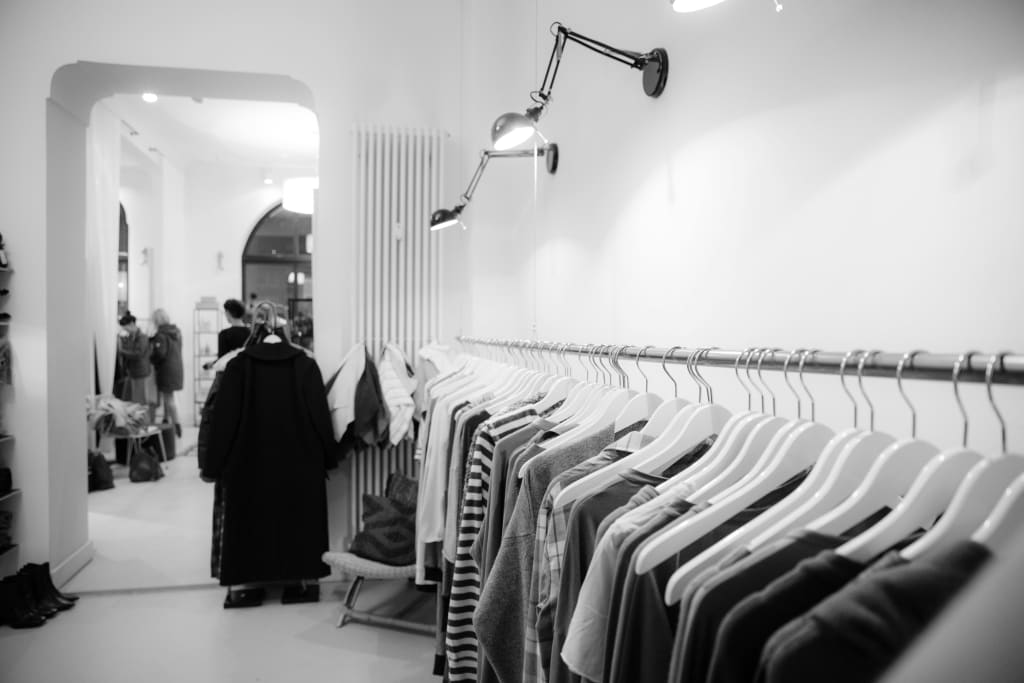In a world where fast fashion dominates and influencers showcase new outfits daily, the rise of minimalist fashion offers a refreshing counter-narrative. More than just an aesthetic choice, minimalist style has evolved into a quiet form of resistance—one that pushes back against overconsumption and promotes a more thoughtful, intentional approach to clothing.
This article explores how minimalist style is becoming a lifestyle shift, helping people disengage from the consumerist cycle and reconnect with values like sustainability, quality, and authenticity.
The Problem With Fashion Consumerism
Modern fashion is built on a model that encourages excessive buying. With weekly drops, sales campaigns, and trend cycles that move faster than ever, it’s no surprise that closets are overflowing—and yet, people still feel they have nothing to wear.
According to research by the Ellen MacArthur Foundation, the average consumer today buys 60% more clothing than they did 15 years ago, yet keeps each item for only half as long. This churn has serious environmental consequences. Textile waste is piling up in landfills, and fast fashion supply chains often involve questionable labour practices and resource-heavy manufacturing.
On a personal level, consumerism can lead to decision fatigue, wardrobe stress, and even emotional burnout. Chasing trends can become a cycle that never feels fulfilling.
What Is Minimalist Style?
Minimalist fashion rejects this cycle. It centres around the idea that less can truly be more—not only in terms of quantity, but in terms of peace of mind, clarity, and purpose.
Rather than filling a closet with items that serve fleeting trends, minimalist fashion favours timeless, versatile pieces. It’s not just about neutral colours or clean lines (though those are common characteristics), but about making intentional choices with every purchase.
A minimalist wardrobe is built to last. It values craftsmanship over branding, comfort over novelty, and authenticity over attention.
Why Minimalist Fashion Is Gaining Momentum
Minimalism has been popular in design, architecture, and art for decades, but its resurgence in fashion reflects a cultural shift. As climate concerns rise and consumer fatigue grows, many people—especially millennials and Gen Z—are beginning to reassess their shopping habits.
This movement isn’t about deprivation or looking plain. Instead, it’s about refining your style to better reflect who you are, without being dictated by what’s trending on social media or in store windows.
Minimalist fashion also overlaps significantly with sustainability. Choosing to buy less, invest in high-quality items, and avoid fast fashion brands all contribute to a lower environmental footprint.
The Core Elements of a Minimalist Wardrobe
While personal expression is key, certain themes tend to emerge in minimalist style. These include:
- A neutral or cohesive colour palette
- Simple, well-structured silhouettes
- Durable materials like cotton, wool, or linen
- A limited number of versatile pieces that can be mixed and matched
- A focus on quality stitching, fit, and longevity
- Minimal (or no) logos, patterns, or flashy branding
Minimalist wardrobes may include capsule collections—small, curated sets of clothing designed to cover all needs with minimal items. The idea is not to restrict, but to eliminate excess so that everything in your closet serves a purpose.
Minimalism as a Rejection of Fast Fashion
Fast fashion thrives on rapid turnover. New products are launched every few days, encouraging consumers to continually refresh their wardrobe—even if the clothing falls apart within a few months. This system thrives on the idea that you’re always missing something.
Minimalism flips that script.
Rather than constantly looking outward for the next piece to “complete” a look, minimalist style encourages looking inward. What do I really need? What do I actually wear? What feels authentic to me?
This intentional mindset leads to buying fewer clothes, but wearing them more often and taking better care of them. That not only reduces environmental waste but also saves money in the long run.
The Psychological Benefits of Dressing Simply
While the visual appeal of minimalist style is obvious, its mental health benefits are often overlooked. Simplifying your wardrobe can reduce decision fatigue—those daily moments of staring at a full closet but feeling like you have nothing to wear.
A smaller, more thoughtful wardrobe can also boost confidence. When everything you own fits well, suits your lifestyle, and reflects your values, you’re more likely to feel good in what you wear.
Minimalist fashion also encourages presence. Instead of chasing new items, you spend more time appreciating what you already have—and that mindset often spills into other areas of life.
Minimalism and the New Definition of Luxury
Luxury used to be about logos and exclusivity. But in 2025, the definition is shifting. The new luxury is subtle, timeless, and sustainable.
Brands like The Row, COS, and Everlane have capitalised on this shift by offering high-quality basics that are free of flashy logos or excessive embellishments. Their pieces are designed to last, not to dominate a trend cycle.
Minimalism has become aspirational in its own right. Not because it flaunts wealth, but because it reflects a sense of control, confidence, and conscious living.
How to Start Your Minimalist Wardrobe Journey
Transitioning to a minimalist style doesn’t mean throwing everything out and starting from scratch. It can be a gradual process. Here are a few tips to begin:
- Take Inventory: Go through your wardrobe and identify pieces you wear regularly. These are your true essentials.
- Declutter: Remove what doesn’t serve you anymore—especially items you haven’t worn in over a year.
- Define Your Palette: Choose a few base colours (like black, white, navy, or beige) and one or two accent shades.
- Invest Wisely: Replace fast fashion items slowly with high-quality versions that you’ll wear for years.
- Buy Less, Wear More: Aim to buy fewer pieces each year and style them in different ways.
Final Thoughts
Minimalist style is far more than a fashion trend—it’s a response to a world driven by overconsumption and instant gratification. As people begin to prioritise sustainability, mental clarity, and personal values, minimalism offers a path forward.
It’s not about rules or restrictions. It’s about freeing yourself from the pressure to constantly buy, and instead creating space for what really matters: authenticity, intention, and self-respect.
Minimalist fashion isn’t just about what you wear. It’s a statement about how you want to live.
Frequently Asked Questions (FAQs)
1. How can I reduce the number of clothes I own without feeling like I have nothing to wear?
Start by identifying your favourite pieces—the ones you wear most often. Build around them and let go of clothes you rarely wear. Focus on items that can be styled in multiple ways, so you always have outfit options without needing a large wardrobe.
2. Is it okay to wear the same outfits often?
Yes, repeating outfits is completely fine. In fact, many people find it freeing. When you own clothes you truly like and feel good in, wearing them often becomes a part of your personal style, not something to feel guilty about.
3. What should I look for when buying new clothes if I want them to last?
Pay attention to fabric quality, stitching, and fit. Natural fabrics like cotton, wool, and linen tend to last longer. Also, look for classic styles rather than trend-based items—they won’t go out of fashion quickly.
4. How do I stop impulse buying clothes
Before making a purchase, give yourself a 24 to 48-hour pause. Ask yourself if you really need it, if it matches what you already own, and how often you’ll wear it. Often, the urge passes once the emotion of the moment fades.
5. Why are fewer clothes considered better by some people?
Having fewer clothes can make life simpler. You spend less time choosing outfits, save money, and often feel more organised. Many people also find they feel more confident when their wardrobe reflects their true style rather than trends.



